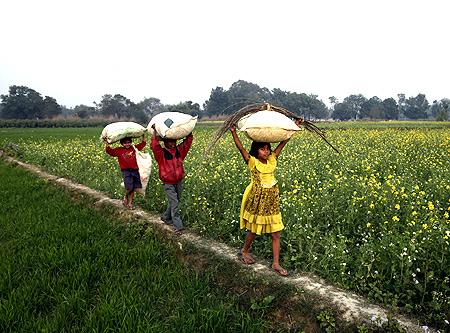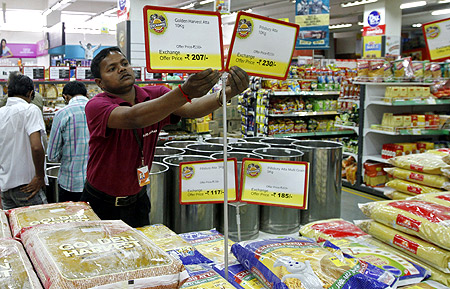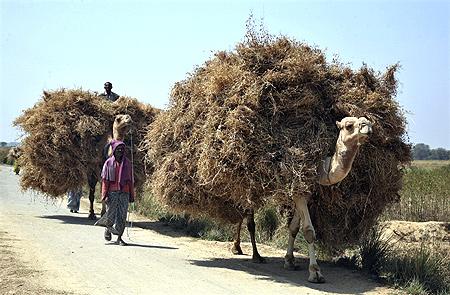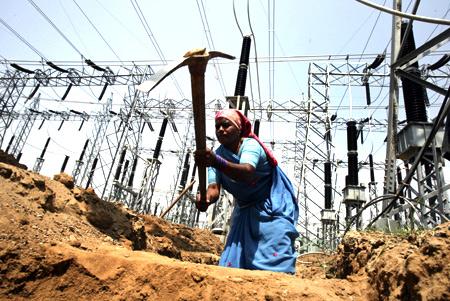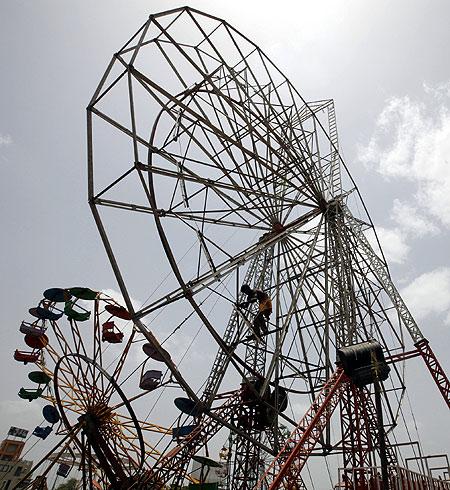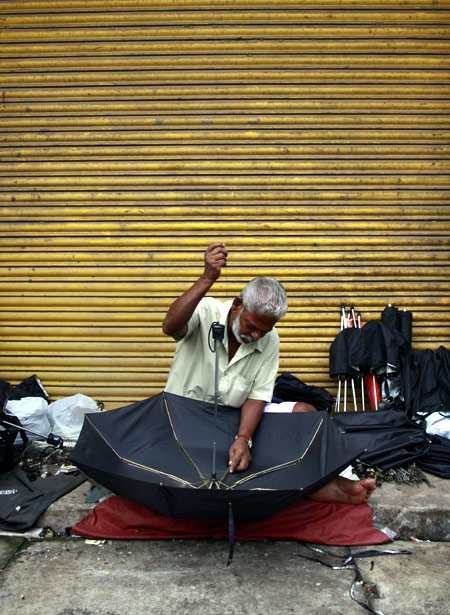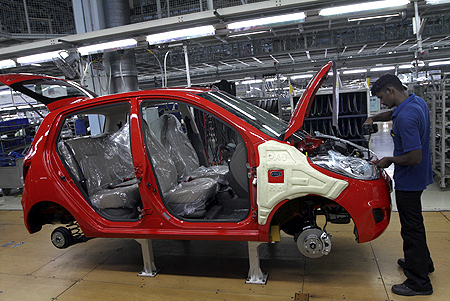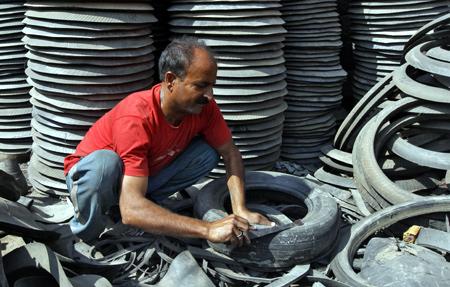 | « Back to article | Print this article |
Slowdown: Has India entered a stagflation period?
After Moody's Analytics, another international agency engaged in assessing economies, Fitch Ratings, has said India's economy appears to have entered into stagflation, a situation of low growth and high inflation that leads to high unemployment.
But, economists and policy makers in the country differ.
"A combination of slower real GDP (gross domestic product) growth of 6.5 per cent and higher headline wholesale price (WPI) inflation of 8.8 per cent, both in 2011-12, suggests India may have entered into a period of stagflation," Art Woo, director, Asia sovereign ratings at Fitch Ratings, told Business Standard.
A few weeks ago, global financial information firm Moody's Analytics had said India was in stagflation, with notably weaker growth and high inflation.
Click NEXT to read more...
Slowdown: Has India entered a stagflation period?
However, policy makers and economists back home do not feel it is stagflation in India yet, though some of them say the economy is inching towards that phase.
"There is no stagflation, there is slowing (of growth)," Prime Minister Manmohan Singh had said last week.
C Rangarajan, chairman of the Prime Minister's Economic Advisory Council, also denied the stagflation reports, saying there was a slowdown in growth, but no stagnation.
"Stagflation was originally used in the developed countries where inflation was high and there was no growth. It does not hold true for India," he said.
Click NEXT to read more...
Slowdown: Has India entered a stagflation period?
India's GDP growth fell to a nine-year low of 6.5 per cent in 2011-12 and at least 32-quarter bottom of 5.3 per cent in the fourth quarter last financial year.
WPI inflation stood at 7.55 per cent in May, while consumer price index –based inflation remained in double digits for the second consecutive month at 10.36 per cent in May.
"Yes, there is high inflation and growth is not as strong as it used to be. I expect growth to pick up in the current fiscal. It would be slightly higher than last fiscal's growth of 6.5 per cent," Rangarajan added.
Click NEXT to read more...
Slowdown: Has India entered a stagflation period?
The term stagflation was coined by British politician Iain Macleod, who used the phrase in his speech to parliament in 1965, when he said: "We now have the worst of both worlds - not just inflation on the one side or stagnation on the other. We have a sort of 'stagflation' situation."
Stagflation is popularly used to describe the situation in the 1970s, when advanced economies faced serious crises.
In 1974, prices in the US rose more than 10 per cent, while unemployment reached 9.2 per cent.
Click NEXT to read more...
Slowdown: Has India entered a stagflation period?
Every measure taken to reduce unemployment stoked inflation without reducing unemployment, and every measure taken to reduce inflation failed to do anything except increasing unemployment.
"Technically, we are not in stagflation as the growth hasn't stagnated along with high inflation," said D K Joshi, chief economist, CRISIL.
However, he said the economy was certainly inching towards stagflation as India's growth rate, falling to 5.3 per cent, created the same scare as zero growth in the advanced economies.
Click NEXT to read more...
Slowdown: Has India entered a stagflation period?
For the developed world, the desirable growth rate is three per cent, which has declined to nearly zero now.
But in India, it is nine per cent, which has declined about 350 basis points to 5.3 per cent, creating the same alarm as no-growth in the developed countries.
Madan Sabnavis, chief economist at CARE Ratings, however, differs. Stagflation is generally recession and high inflation. Apart from a couple of months of negative industrial growth - October and March - India did not have negative growth, he said.
Click NEXT to read more...
Slowdown: Has India entered a stagflation period?
"Slowdown and recession are two distinct phenomena and high inflation and slow growth is not stagflation," Sabnavis said.
India's Index of Industrial Production (IIP) contracted 4.9 per cent in October and 3.5 per cent in March. However, for the entire 2011-12, the industrial production grew 2.8 per cent, against 8.2 per cent in the previous financial year.
The industrial sector contributes around 19 per cent to India's GDP, while a bigger portion of the economy is dominated by the services sector.
Moreover, India has not witnessed a rise in unemployment. Unemployment levels are stable, Sabnavis said.
Click NEXT to read more...
Slowdown: Has India entered a stagflation period?
"We do not have a situation where the industry is laying off workers."
As per the labour ministry's first survey on employment, unemployment rate stood at 9.4 per cent in 2009-10, according to one of the criteria.
The ministry is soon going to come out with another employment data. However, much of unemployment in India is disguised, particularly in agriculture and allied activities which still employs the largest number of the labour force.
In India, inflation is due to supply bottlenecks and not due to excess spending by the government or excess money supply, like is the case during stagflation, Sabnavis added.
